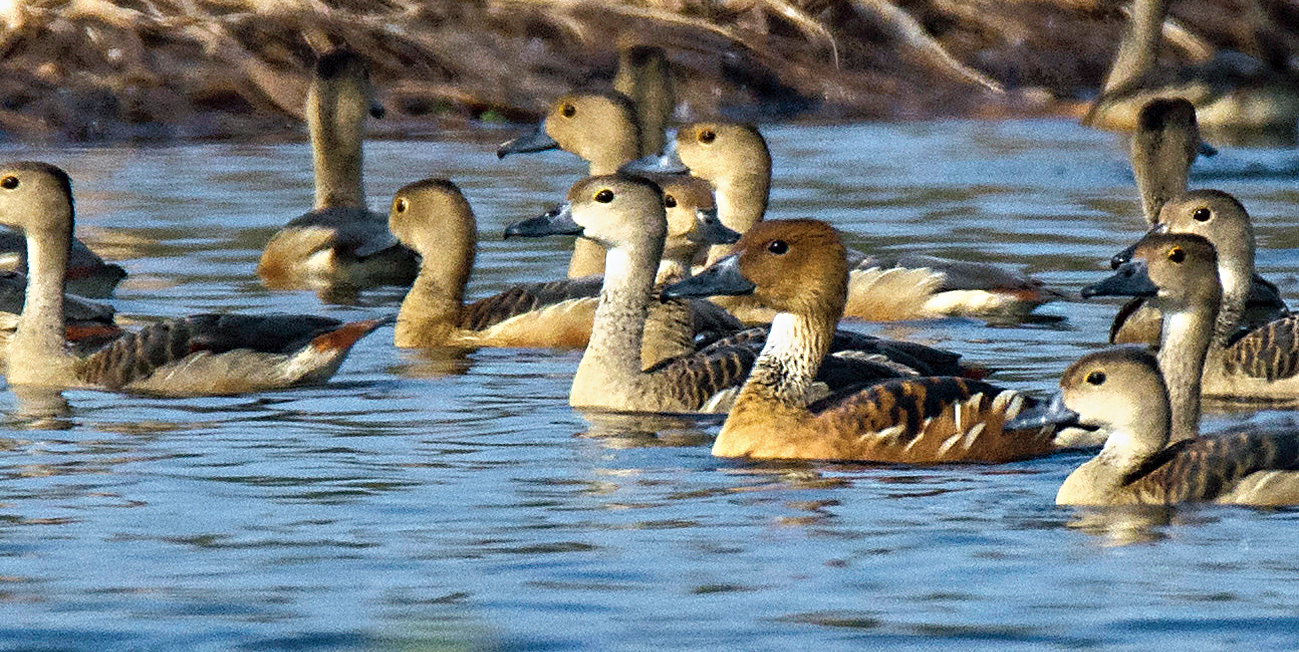A waterfowl census at Santragachhi Jheel on Saturday yielded a count of nearly 3,000 birds spread across 16 species, a figure attributed in large part to the last-minute intervention by volunteers after a futile wait for the forest and municipal authorities to scientifically clean the lake.
The figure is small compared to the glory days of Santragachhi Jheel but is almost four times that of the last such count. Only 800 birds had been found when birders carried out the census at this time the previous year. The abnormally low turnout had been blamed on unscientific cleaning that left the lake bereft of the water hyacinth islands where birds roost.
While the official census between 10am and 11am gave a count of 2,889 birds, the majority of them Lesser Whistling Ducks, the afternoon was apparently more productive for a group of birdwatchers.
According to a Facebook post by birding veteran Shubhankar Patra, who runs the nature enthusiasts’ group Sunday Watch, a lone Fulvous Whistling Duck and a pair of Ferruginous Pochards were spotted in a mixed flock of 4,000 on Saturday. “A census is conducted at a particular time. It doesn’t mean that the birds found then are the only ones that have made the lake their winter home,” a birdwatcher said.
The annual winter census at Santragachhi Jheel has been conducted since 1990 by the NGO Prakriti Sansad.
Lesser Whistling Ducks, always the predominant species, are local migrants that breed across the subcontinent. Given the lake’s recent history, even the sparse presence of three species of trans-Himalayan migrants and one from the Himalayan foothills is being treated as significant.
“We found 22 Gadwalls and 10 Northern Pintails, besides the pair of Ferruginous Pochards. All three species are trans-Himalayan migrants,” said Prosenjit Dawn, a birdwatcher who was part of the team that conducted the census.
Thirteen Barn Swallows, a migrant from the Himalayan foothills, were also found.
Ideally, a lake like Santragachhi Jheel should have islands of hyacinth and clear water to attract birds. “While birds roost on the hyacinth islands, they need the clear patches of water to swim. Some species feed on planktons and small fishes found in the lake,” Patra said. “The absence of either will drive away birds.”
Kushal Mookherjee, founder of Prakriti Sansad, said the number of birds seen on Saturday might have been smaller had some volunteers not stepped in to prepare the lake for the winged guests. “We are lucky to have got these birds, thanks to some citizens who cared to clean the waterbody. But this cannot be the solution every year. Santragachhi Jheel needs a proper management plan.”
The cleaning was carried out between November 22 and December 3 at a cost of about Rs 3.75 lakh. Bhowanipore Education Society College contributed a major portion of that amount.
Year-wise census data from Santragachhi show 7,317 birds in 2014 and 7,297 birds in 2015. The decline started in 2016, when 5,474 birds were counted. In 2017, the figure dipped sharply to 3118.
“We didn’t see any Northern Shoveler this winter or even last winter. There can be many reasons why bird numbers are decreasing. It could be because of destruction of habitats here or even in their breeding places. Destruction in breeding places means birds have moved to new places,” Patra said.










